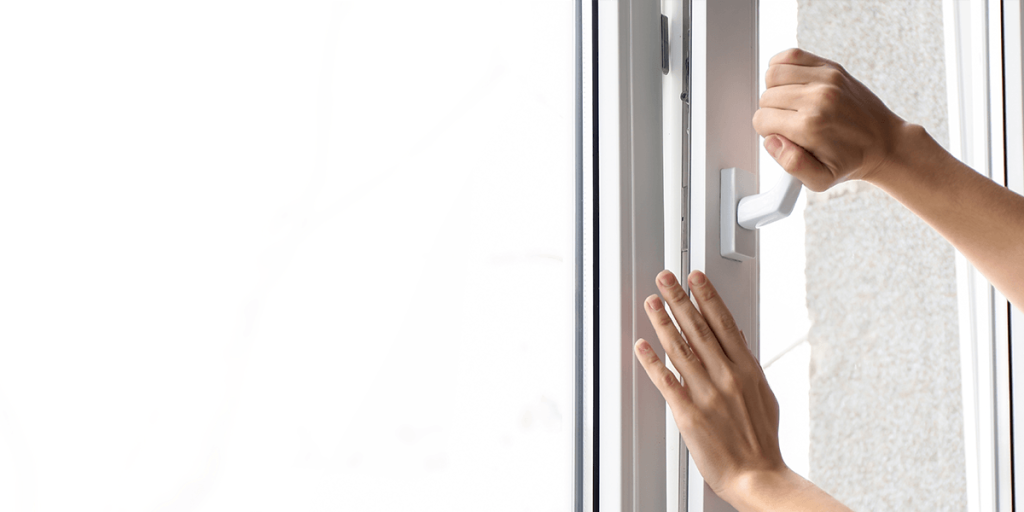
Windows are essential, functional home features that allow air and sunlight to flow into your home. While opening a window can let in a refreshing breeze and improve your indoor air quality, you might find yourself avoiding the effort if you struggle to get your window open or closed.
Windows can be hard to open for various reasons such as dirty framing, stuck rollers, or hinge problems. Sometimes, a quick DIY fix can remedy the issue to restore smooth window function. But in others, you might need to reach out for professional assistance.
Before you start shopping for replacements, these five tips might help you figure out how to open windows that are stuck.
Whether you have double-hung, sliding, casement or awning windows, it’s wise to try troubleshooting the issue before budgeting for a total replacement. Most problems that make windows hard to open are relatively easy to solve. However, you’ll need to understand the root cause of the problem.
Why won’t your window open? Common causes of windows not opening include:
While some of these issues are relatively easy to resolve, others may require more effort or a professional hand. Below are five tips to fix windows that are hard to open.
Because window framing has grooves to ensure a tight seal when closed, dirt can accumulate there over time, making the window stick. Fortunately, it’s relatively straightforward to fix this issue. Grab a damp cloth, mild cleaning detergent and a vacuum cleaner with a hose attachment. Start by vacuuming all four sides of the framing to remove loose debris. Then, use your cloth and detergent to remove leftover dirt. You may need to scrub depending on how much buildup there is.
Once the frame is clean, try to open and close the window. If it opens and closes smoothly, make a habit of cleaning the frame every couple of months to prevent the issue from recurring.
If the window still does not open and close seamlessly, try lubricating the hardware parts. A dry or silicone-based lubricant is a suitable product to use. Spray it onto the hinges and allow the product to seep in. Then, spray the locking mechanism, latches and framing with lubricant. Next, lubricate the rollers and tracks on sliding windows. Be sure to wipe away any excess product before testing the window again. If lubrication doesn’t solve the issue, you may need to adjust or replace damaged hardware.
Different windows have various types of hardware.
With casement windows, the hinges, locking handle and crank handle can become damaged due to wear and tear that comes with frequent use. Casement windows can also struggle when the screws are loose or stripped. Inspect the screws that hold the hardware in place and try to tighten them. If you can’t tighten screws, you must replace them.
Double-hung windows have sash locks and lift handles on the bottom rail. They also have hinges, which are usually the culprit when these windows become difficult to open. Sometimes, you might need to replace the locks, handles or latches. Inspect these parts for signs of damage or rust.
With sliding windows, sash locks, rollers and tracks, assess the primary hardware parts. You may need to replace the rollers or tracks if these windows jam.
Awning windows have a crank handle, a locking handle and hinges. It’s best to replace these parts if they become damaged or rusty.
The issue might be warping or swelling if you’ve cleaned the frames, lubricated moving parts and replaced damaged hardware and the window is still hard to open and close.
Wood and vinyl windows can become warped or swollen if the caulk around them wears down or becomes cracked. The caulk seals the frame to prevent moisture from entering the framing material. If this waterproof sealing fails, wood framing can swell and vinyl framing can warp. Vinyl framing can also warp due to excessive sunlight exposure.
Inspect the caulk to identify signs of damage. You may need to replace the framing if you notice anything wrong. Unfortunately, you can’t restore water-damaged wood or vinyl.
Double-hung windows may be challenging to open and close because they are too heavy to move freely. Spring-loaded balancers are an ideal solution. The balancers incorporate a coil spring part to manage the weight of the heavy window.
To install this part, remove the window sash by lifting it and disengaging the panel from the hinges or tracks. Then, insert the spring-loaded balancer into the top corner of the sash channel and secure it with screws. Install another spring-loaded balancer on the other side of the sash channel, and be mindful of alignment.
Fit the window sash back onto the tracks or hinges and test the new installation by opening and closing the window.
Reach out for professional assistance if these quick fixes don’t restore smooth function to your windows. Your windows may need complete replacement. Sometimes, a shifting foundation may gradually move your window frames out of alignment. In other cases, you may need to replace the damaged framing.
Renewal by Andersen has replaced over 2 million windows across America as an industry leader in residential window installation. You can trust us to recommend and provide superior-quality replacements. We offer an extensive range of window styles and designs with energy-efficient glass pane solutions.
Schedule a consultation online, and we’ll help you choose the best replacement windows for your home.
Links:
Sources: